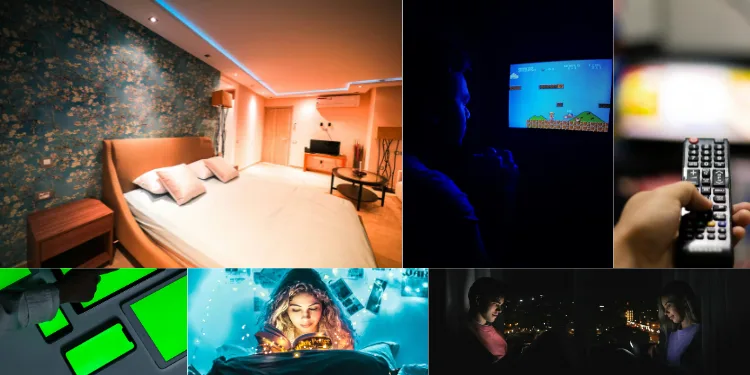
Light is a relatively insignificant aspect of our sleep, and we often fail to acknowledge its impact. Although you may believe it’s only noise, stress, or caffeine keeping you tossing and turning, the glow from your phone, the flicker of the TV, or even the warm hum of a bedside lamp can silently sabotage your rest. Our internal clock, the circadian rhythm, is very much affected by light exposure. For instance, blue light, the kind from phones, tablets, laptops, and even some LED lights, tells your brain, “Hey, it’s daytime!” even if it’s midnight. That perplexes your body, stifling melatonin (the sleep hormone) and making it more difficult to relax. There then is brilliant white light, like strong overhead lights or daylight pouring through thin curtains; perfect for waking you up in the morning, but imperfect if you’re subjected to it too close to bedtime.
Warm, subdued lighting in the evening, soft lamps or amber bulbs—helps to signal to your brain it is time to unwind. For a light sleeper, even the little flashing LED on a charger or a sliver of streetlight coming through the blinds can feel like a spotlight; some people are more sensitive than others. Colored illumination has its effects as well: red or amber light is the least disruptive to melatonin production, hence it is a better option for night lights; bright green light is found to stimulate the brain nearly as much as blue. Even warm and soft candlelight can establish a soothing ambiance that helps you sleep more easily. For those battling sleeplessness or restless nights, managing your light environment can be a game-changer: blackout curtains to block city lights, blue-light filters on screens after sunset, and soft, warm lamps to help you establish a relaxing bedtime routine. Sleep is about more than closing your eyes; it’s about establishing a setting that allows your body and brain to think it is nighttime. And occasionally, the smallest glow might steal most of your aspirations.
Post Disclaimer
Utilizing my own personal experiences as well as my background as a Registered Nurse, I share my enthusiasm for travel and health on this blog. Though I love what I do and sometimes talk about tactics for modest health improvement, keep in mind that the material provided might not be exact. The material herein is just for self-improvement. The content shared draws on my own experiences, thoughts, and stories. With this in mind, readers should consult their healthcare providers about any concerns they may experience.
Since each person has a different health path, what helps one person may not help another. Readers should consult their personal healthcare providers for personalized guidance based on their individual needs and circumstances. Rather than replacing the professional, my goal here is to inspire, enlighten, and start conversations that improve and make life more fulfilling relations between you and your medical staff.